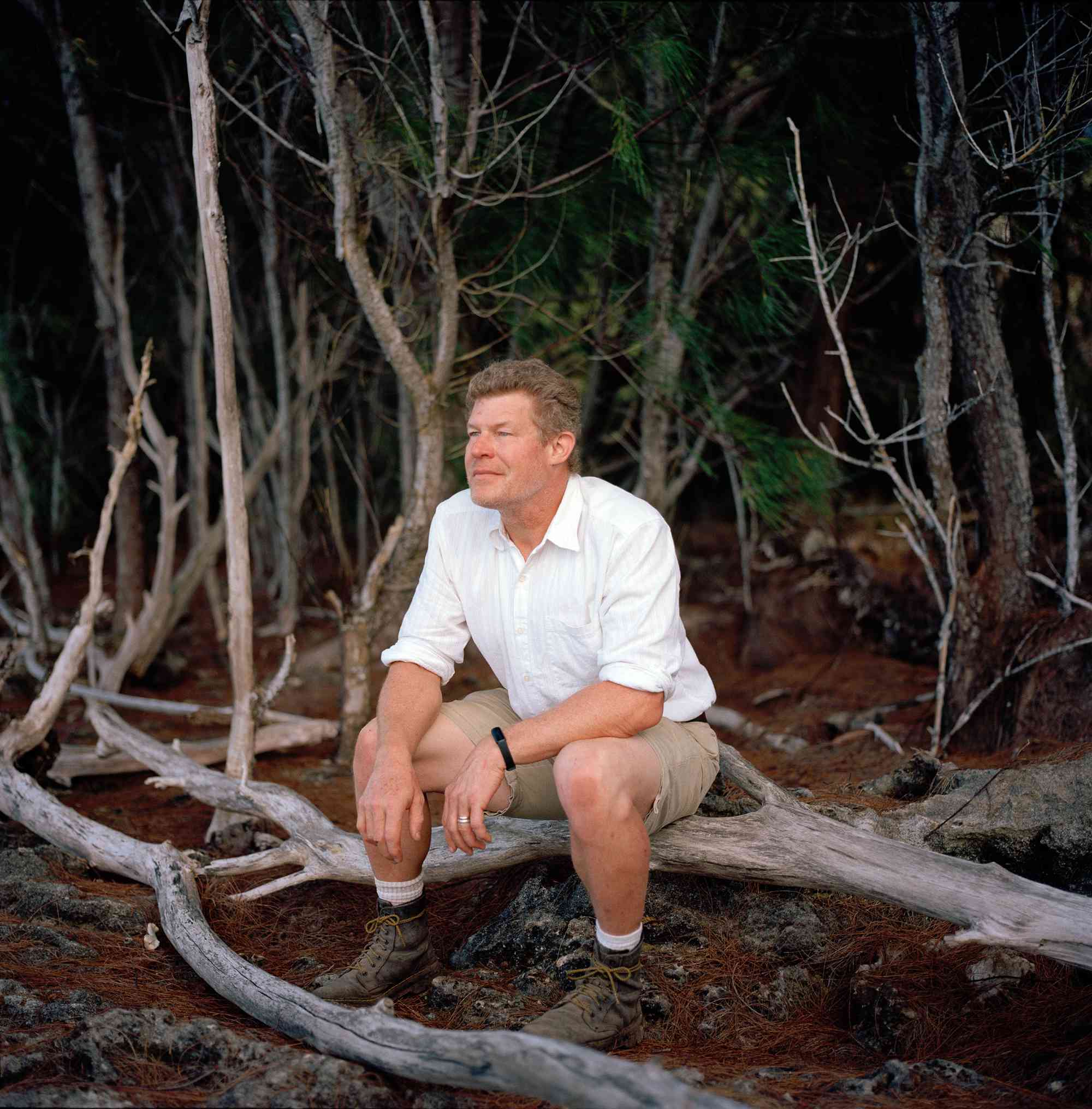Smithsonian Magazine highlights the role of a Rochester historian and archaeologist in unearthing Bermuda's colonial origins.
It's not every day that a researcher finds himself at the center of a lavish 12-page magazine feature, replete with glossy photos of his sometimes place of work-a subtropical island. But that's exactly what happened to Michael Jarvis, a professor of history at the University of Rochester and the director of the Smith's Island Archaeology Project in Bermuda.
The Smithsonian Magazine's cover story-"The Hidden History of Bermuda Is Reshaping the Way We Think of Colonial America"-chronicles how Jarvis has been working with Rochester students and local Bermudians over the past 14 years to excavate evidence of one of Britain's first settlements in the Americas.
This past summer, the magazine sent a writer and a photographer to document the second of Jarvis's National Endowment for the Humanities-funded excavations in a thick forest on one of Bermuda's islands:
A few dozen yards away, in a dirty T-shirt, faded camo shorts and black work boots, Michael Jarvis hacked away at thick brush with a gas-powered saw. In this clearing on Smith's Island, in Bermuda, Jarvis-"Chainsaw Mike" to his students-is unearthing one of the first New World towns built by English colonizers.

Established in 1612, just five years after the founding of the Jamestown colony in Virginia and eight years before the Pilgrims arrived at Plymouth, Massachusetts, the original colony on Smith's Island was short lived-only to reemerge on another, nearby Bermudian island. But the mystery persists. "Its very existence was forgotten for four centuries; even its name remains unknown," notes Andrew Lawler, who wrote the cover story for the Smithsonian.
Reading histories about the early beginnings of the American colonies-the traditional origin stories of the United States-one is hard pressed to find much, if any, mention of Bermuda.
"When historians have considered it, they usually dismiss it as a curiosity or a failure," notes Jarvis, who sought to rectify that omission with his latest book, Isle of Devils, Isle of Saints (Johns Hopkins University Press, 2022).
Yet, for a time, Bermuda was home to more settlers than either Virginia or Massachusetts, and far wealthier. Indeed, it was here that the English first grew tobacco and purchased enslaved Africans to work the fields, a practice that soon spread to American shores.






